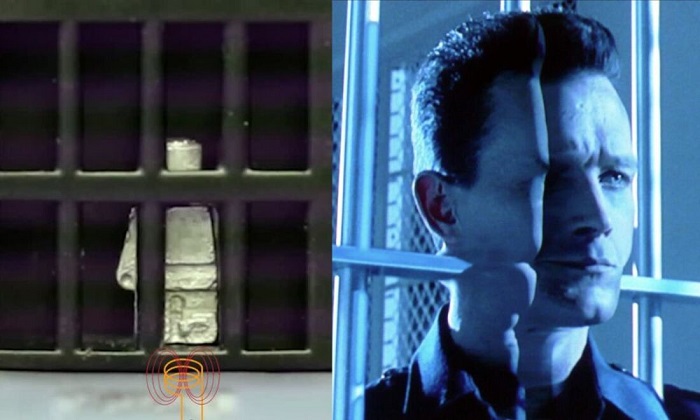ISABEL RUBIO ARROYO | Tungsteno
A robot that can melt and then return to its original solid form when needed. This is the surprising invention developed by a team of researchers inspired by sea cucumbers. "This material can achieve Terminator 2-like performance, including fast movement and heavy load bearing when it is in its solid state, and shape changing in its liquid state," says Chengfeng Pan, an engineer at the Chinese University of Hong Kong who led the research. We look at how this robot could be used to administer drugs or operate in mechanical environments thanks to its ability to access hard-to-reach spaces, as well as its limitations.
From solid to liquid in seconds
Traditional robots tend to have a hard, rigid body. Soft robots, on the other hand, are flexible but weak and perform movements that are difficult to control. "Giving robots the ability to switch between liquid and solid states endows them with more functionality," says Pan. With this in mind, his team has created a new material by embedding magnetic particles in gallium, a metal with a very low melting point (29.8 °C).
The robot, details of which are published in the journal Matter, is called MPTM— Magnetoactive Phase Transition Material. Its magnetic particles have two functions, according to study co-author and mechanical engineer Carmel Majidi of Carnegie Mellon University: "One is that they make the material responsive to an alternating magnetic field, so you can, through induction, heat up the material and cause the phase change. But the magnetic particles also give the robots mobility and the ability to move in response to the magnetic field."
The robot is able to escape from a small cage by switching to a liquid state. Credit: The Independent
From escaping prison to administering medicine
In its liquid form, the robot can elongate, split and merge. When solid, it can move at up to 1.5 metres per second and carry objects up to 30 times its own weight. The researchers have tested the material's mobility and strength in various contexts. In theory, with the help of a magnetic field, the robots can jump over moats, climb walls and even split into two parts to cooperatively move other objects before reuniting.
The researchers also shared a video in which a robot in the shape of a Lego minifigure appears inside a tiny prison. It then escapes through the bars in a liquid state and solidifies again once it is free. In other experiments, the robot was used both to remove a foreign object from a model stomach and to administer drugs into it.
The robot could be used to remove foreign objects from some organs. Credit: Science X: Phys.org, Medical Xpress, Tech Xplore
The researchers also highlight the robot’s enormous potential in mechanical environments. It could be used to repair electronic components in hard-to-reach places; for example, soldering in confined spaces or acting as a universal mechanical screw for assembling parts. One of its advantages is that it could flow into the threaded sleeve of a screw and then solidify, without the need to be screwed in.
Limitations of this robot reminiscent of the Terminator
The MPTM robot has been compared to the T-1000, a character in the movie Terminator 2. But Pan says there are some differences. For example, the robot "still needs an external heater for melting and an external magnetic field for controlling the movement and shape changing." The Terminator robot, on the other hand, is fully autonomous. But the MPTM also has other limitations. For example, it contains some particles that are toxic to humans, Brad Nelson, a professor of robotics at ETH Zurich, told The Washington Post. This means that it would only be clinically safe for use in humans if it were completely removed from the body afterwards.
In one experiment, the delivery of a drug wrapped inside the robot was tested. Credit: Science X: Phys.org, Medical Xpress, Tech Xplore
Despite its enormous potential, it is still too early to know what its future applications will be. It is important to remember that so far only a few proof-of-concepts have been carried out in very controlled and specific environments. As Majidi notes, "much more study will be required to delve into how this could actually be used for drug delivery or for removing foreign objects."
· — —
Tungsteno is a journalism laboratory to scan the essence of innovation.
